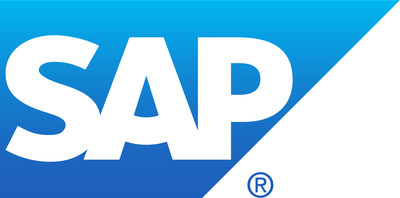Where Does the Money Go? SAP and Oxford Economics Research Reveals Issues with Managing Spend Across the Enterprise
According to a recent study by SAP and Oxford Economics, only 23% of procurement executives can view overall spend in real time, with 49% still relying on manual data analysis. The survey included 1,000 executives and highlights significant gaps in digital adoption. Notably, leaders in procurement achieve better operational efficiency and supplier performance through technology investments. However, 38% of executives still use manual processes. The study emphasizes the need for organizations to digitalize spend management and improve supplier collaboration for better business results.
- Leaders investing in procurement digital transformation see improved operational efficiency and supplier performance.
- The study highlights the strategic value of procurement in driving business agility and resilience.
- Only 23% of procurement executives have a real-time view of overall spend.
- 38% of executives report manual processes in procurement.
- Only 54% of procurement technologies support data-driven decision-making.
WALLDORF, Germany, Feb. 23, 2021 /PRNewswire/ -- Only
The research is built on a survey of 1,000 procurement and supply chain executives responsible for direct and indirect goods, services and external workforce spend. It was designed to help understand procurement's influence on an organization, the current state of supplier collaboration and the impact of technology and process digitalization in the procurement function.
A subset of surveyed executives — the leaders — are realizing stronger business results. Leaders are investing in technology and process digitalization to help anticipate the unexpected, fueling business agility and resilience, and elevating the strategic value of procurement to the business.
The research is distilled into five reports that examine key areas of spend management and discuss what leaders do that set them apart.
Leaders Outshine the Rest
"Leaders Aim Higher: Elevating Procurement's Strategic Value to the Business" focuses on the leaders, around
Digitalized Procurement Pays Off
"Procurement-Powered Performance: How Digital Transformation Is Elevating Procurement" shows that while organizations are reaping benefits from digitalizing procurement, challenges remain. For example,
Supplier Risk Management Shows Progress, But Ample Room for Improvement
"Getting Closer to See Further: Procurement Can Embrace Advanced Analytics to Predict and Manage Supplier Risk" reveals widespread vulnerabilities in supplier risk management, including poor visibility and overreliance on too few suppliers. Only
Supplier Collaboration Key to Direct Spend
"Close Collaboration That Goes Beyond Transactions: Direct Spend Leaders Engage with Essential Suppliers to Improve Performance" illustrates that direct spend leaders who embrace automation and treat suppliers as partners drive superior business results. For instance,
Significantly Undermanaged Spend Category: External Workforce
"Agility Isn't Always on the Payroll: Gain Full Visibility of Your External Workforce to Help You Drive Better Business Outcomes" highlights that just
"Business leaders increasingly understand the value of procurement goes beyond cost reduction," said John Wookey, president, SAP Intelligent Spend and Business Network. "Procurement is central to productivity and innovation, but its potential is only fully realized through digitalizing end-to-end spend management processes on a single platform in the cloud. Putting organizations in a position to align spend decisions to business strategy in today's networked economy — this is what intelligent spend management is all about."
For information on how to accelerate procurement digital transformation and to download the reports, visit www.ariba.com/roadtoready.
Visit the SAP News Center. Follow SAP on Twitter at @SAPNews.
About SAP
SAP's strategy is to help every business run as an intelligent enterprise. As a market leader in enterprise application software, we help companies of all sizes and in all industries run at their best:
Any statements contained in this document that are not historical facts are forward-looking statements as defined in the U.S. Private Securities Litigation Reform Act of 1995. Words such as "anticipate," "believe," "estimate," "expect," "forecast," "intend," "may," "plan," "project," "predict," "should" and "will" and similar expressions as they relate to SAP are intended to identify such forward-looking statements. SAP undertakes no obligation to publicly update or revise any forward-looking statements. All forward-looking statements are subject to various risks and uncertainties that could cause actual results to differ materially from expectations. The factors that could affect SAP's future financial results are discussed more fully in SAP's filings with the U.S. Securities and Exchange Commission ("SEC"), including SAP's most recent Annual Report on Form 20-F filed with the SEC. Readers are cautioned not to place undue reliance on these forward-looking statements, which speak only as of their dates.
© 2021 SAP SE. All rights reserved.
SAP and other SAP products and services mentioned herein as well as their respective logos are trademarks or registered trademarks of SAP SE in Germany and other countries. Please see https://www.sap.com/copyright for additional trademark information and notices.
For customers interested in learning more about SAP products:
Global Customer Center: +49 180 534-34-24
United States Only: 1 (800) 872-1SAP (1-800-872-1727)
Please consider our privacy policy. If you received this press release in your e-mail and you wish to unsubscribe to our mailing list please contact press@sap.com and write Unsubscribe in the subject line.
![]() View original content to download multimedia:http://www.prnewswire.com/news-releases/where-does-the-money-go-sap-and-oxford-economics-research-reveals-issues-with-managing-spend-across-the-enterprise-301233350.html
View original content to download multimedia:http://www.prnewswire.com/news-releases/where-does-the-money-go-sap-and-oxford-economics-research-reveals-issues-with-managing-spend-across-the-enterprise-301233350.html
SOURCE SAP SE
FAQ
What percentage of procurement executives can see overall spend in real-time as per SAP's research?
What is the impact of digital transformation on procurement performance according to SAP?
What challenges do procurement executives face according to SAP's findings?
When was the SAP and Oxford Economics research published?








